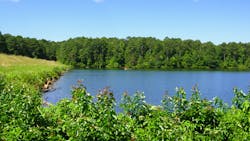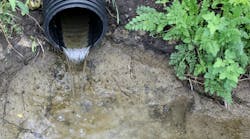Much like the U.S. Census is performed once a decade to get an accurate count of the population of the country, the EPA conducts a similar census-based assessment of needs for the Clean Water sector — the Clean Watersheds Needs Survey (CWNS). These surveys have been performed periodically since the establishment of the Clean Water Act in 1972, with the most recent survey performed in 2012. In 2018, EPA received funding through federal legislation to restart these efforts, resulting in the current 2022 CWNS.
The CWNS is performed through a coordinated effort between EPA, states, and regulated communities to collect information on the needs (and associated costs) for communities to invest in clean water infrastructure, which includes the wastewater and the stormwater sectors, over a 20-year future projection. Specifically, regulated entities collect, format, and submit their needs to the state agency leading the data collection effort. This agency reviews the data submitted by regulated entities and enters this information into a designated EPA data portal. EPA reviews the submitted needs and prepares a report to Congress.
In the 2012 CWNS, the needs of the stormwater sector were under-reported, with only approximately 20 percent of MS4s providing information. Some states were very engaged in this effort in 2012, while others were not engaged at all, which is reflected by the fact that only four states reported over 65 percent of the total need; and 16 states reported no needs at all.
There are likely several reasons for the limited engagement of the stormwater sector in past CWNS data collection efforts. These factors include a limited amount of familiarity with the survey in the urban stormwater sector, questions regarding project eligibility, and limited resources at the state level to collect both wastewater and stormwater cost data. Another reason for limited engagement by the stormwater sector may be the lack of clarity about the benefits of gathering this information.
The current landscape of federal funding should provide this clarity, as the state funding allocation formula for the recently established Overflow and Stormwater Grants (OSG) program is directly tied to the results of the CWNS. In other words, the more needs identified by a state, the more funding to be provided. This could be a significant avenue for funding in the stormwater sector, as the Infrastructure Investment and Jobs Act included $1.4 billion in funding for the OSG program over the next five years.
EPA is committed to significantly increasing the reporting of stormwater capital needs in the 2022 CWNS. Toward this end, EPA has developed a cost estimating tool for stormwater infrastructure, has assembled pre-approved documentation for capital needs in stormwater, is allowing states to develop their own cost estimation methods for review and approval by EPA, and is engaged in outreach to increase awareness of the CWNS in the stormwater sector.
The National Municipal Stormwater Alliance (NMSA) has been closely engaged with EPA staff to assist in the Agency’s goal to increase stormwater cost need data collected. For example, NMSA recently hosted a webinar along with EPA to provide background information on the CWNS, present examples from states on how they plan on providing cost needs to EPA, and discuss issues such as project eligibility and data collection format and processing.
NMSA will continue to work with EPA throughout 2022 to increase awareness on this important topic, while providing input on technical and process-related issues through communication vehicles such as webinars, newsletters, and a dedicated webpage focusing on CWNS and stormwater needs. SW
Published in Stormwater magazine, May 2022.
About the Author
Seth Brown
Seth Brown has over 25 years of experience in the water sector and is the Principal and Founder of Storm and Stream Solutions, LLC, a consulting firm providing a range of services from policy and alternative project delivery analysis in the stormwater sector to facilitation and training services focused on stormwater topics. He was the Director of Stormwater Programs at the Water Environment Federation from 2010-2015 and is currently the Executive Director of the National Municipal Stormwater Alliance, which is a 501.c.3 representing stormwater-focused organizations in 24 states across 9 of the 10 U.S. EPA regions with a network that is comprised of over 4,000 MS4s.
Seth has a Ph.D. in civil engineering from George Mason University with a research focus on socio-economic modeling of incentive-based investments of green stormwater infrastructure on private properties. He leads courses in Green Infrastructure and Innovative Water Partnerships at Virginia Tech and the University of Maryland at Eastern Shore and is a licensed professional engineer in the state of Maryland.


